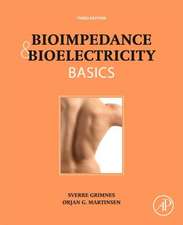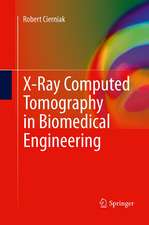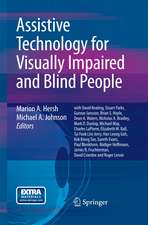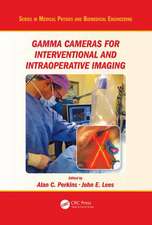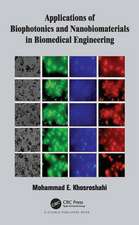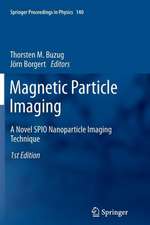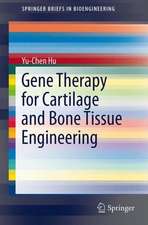Enzyme Technology: III. Rotenburg Fermentation Symposium 1982, Schloßhotel »Wilhelmshöhe« Kassel, 22nd–24th September 1982
B.-Braun-Melsungen-AG Editat de R. M. Lafferty E. Maieren Limba Engleză Paperback – 31 oct 1983
Preț: 373.33 lei
Preț vechi: 392.97 lei
-5% Nou
Puncte Express: 560
Preț estimativ în valută:
71.43€ • 74.79$ • 59.11£
71.43€ • 74.79$ • 59.11£
Carte tipărită la comandă
Livrare economică 05-19 aprilie
Preluare comenzi: 021 569.72.76
Specificații
ISBN-13: 9783540124795
ISBN-10: 3540124799
Pagini: 332
Ilustrații: XI, 316 p.
Dimensiuni: 170 x 244 x 17 mm
Greutate: 0.53 kg
Editura: Springer Berlin, Heidelberg
Colecția Springer
Locul publicării:Berlin, Heidelberg, Germany
ISBN-10: 3540124799
Pagini: 332
Ilustrații: XI, 316 p.
Dimensiuni: 170 x 244 x 17 mm
Greutate: 0.53 kg
Editura: Springer Berlin, Heidelberg
Colecția Springer
Locul publicării:Berlin, Heidelberg, Germany
Public țintă
ResearchDescriere
The main subject of the "Ill. Rotenburger Fermentation Symposium" is enzyme technology. Enzyme technology could be simply defined as the scientific study of proteinaceous catalysts derived from living organisms and the application of the knowledge to solve specific problems. The scope of the application of enzyme technology ranges from medical to industrial uses and in the future even living organisms as a source of enzymes may be replaced by fully synthetic enzymes - "synzymes". Although enzyme technology still remains a particular field of biotechnology, the extremely rapid rate of expansion and the enormous increase in the diversifica tion of all aspects of enzyme technology during the immediate past has created a certain tendency to separate biotechnology and enzyme technology from each other. Certainly, those areas of biotechnology characterized by astounding advances are enzyme technology, bioreactor development and genetic manipula tion as related to biotechnological processes. However, a glance at many of the common problems of biotechnology and enzyme technology such as diffusion barriers, reactor design, mass transport, substrate or product inhibition pheno mena and the effect of physical-chemical parameters on process kinetics reveals that these two fields are inseparable with respect to research and application.
Cuprins
Opening Lectures.- Enzyme Technology.- Industrial Enzymes — Present Status and Opportunities.- Parameters Involved in Heterogeneous Biocatalysis.- Unusual Catalytic Properties of Usual Enzymes.- I. Enzyme Production.- Purification and Characterization of Membrane-Bound Aldehyde Dehydrogenase from Acinetobacter calcoaceticus Grown on Long-Chain Alkanes.- Application of the Recombinant DNA Technique to Enzyme Technology.- Induction of Cellulases in Trichoderma reesei.- Extracellular Acid Protease of Rhizopus rhizopodiformis.- Enzymatic Halogenation of Allyl Alcohol to 2,3-Bromchloro-, Bromoiodo-, and Fluoroiodo-1- propanols: A Study at the Interface of Chemical and Enzymatic Catalyses.- II. Cell Disintegration.- Disintegration of Cells by Extrusion Under Pressure.- Disintegration of Microorganisms in a 20 1 Industrial Bead Mill.- III. Enzyme Purification.- Enzymatic Activity Can be Recovered from Solvent-Denatured Catalase.- Extractive Purification of Enzymes.- IV. Soluble Enzymes: Application.- Enzymic Developments in the Production of Maltose and Glucose.- Enzymatic Polymerisation of Lignin.- Application of Enzymes to Organic Synthesis.- Preparation of Isotopically-Labelled Amino Acids with L-Methionine ?-Lyase.- V. Immobilized Enzymes and Cells: Application.- Use of the Enzyme Thermistor as a Flow Analyzer in Biotechnology.- Prepararion, Properties and Possible Application of Coimmobilized Biocatalysts.- New Development in the Field of Cell Immobilization — Formation of Biocatalysts by Ionotropic Gelation.- Immobilized Enzyme and Cell Technology to Produce Peptide Antibiotics.- VI. Enzyme Reactors and Process Design.- Reaction Technology of the Enzymatically Catalyzed Production of L-Alanine.- Development of a Tubular Recycle Membrane Reactor for Continuous Operation with Soluble Enzymes.- Kinetically vs. Equilibrium-Controlled Synthesis of C—N Bonds in ?-Lactams and Peptides with Free and Immobilized Biocatalysts.- Kinetics and Thermodynamics of Reactions Catalyzed by Penicillin Acylase — Type Enzymes.

